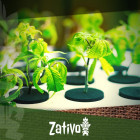Don't have an account?
Register NowYou have to add to cart at least 5 bottles or any program to make checkout.
- BlogThe Top 10 Rookie Mistakes Of Growing Cannabis
The Top 10 Rookie Mistakes Of Growing Cannabis
Published: February 11th, 2016
Categories:
Cannabis Cultivation
It is easy to make mistakes when you are a rookie grower. Everyone does it; it is part of the learning process. Here are some of the common errors, and how to avoid them.
TOO MUCH WATER
We all know plants need water to grow, but their root systems also need air. The roots can’t breathe in water, and when you let them dry out, they will die as well. So balance is the key, try to keep it from drying out too much but don’t make it into a swimming pool. A good way to get a feel for how much watering your plants need is to lift the container when watered and try to remember the weight. The next time you would water your plants, lift the container and try to feel the difference. It should be lighter than yesterday. Some days the plants will use more water than others so getting a feel for this can prove very useful.
TOO MUCH FERTILIZER
Too much of good thing is a bad thing my grandma always used to say, and it applies to the case of fertiliser very well. It is very tempting to over fertilise your plants in the hope of making them grow faster or bigger, but the contrary is true. Giving your plants too much nutrients can burn the root system or the leaves. It could take a few days of giving only water before the plant recovers – if it recovers at all - so be careful with this!
USING LOW QUALITY SEED GENETICS
When you use seeds with bad genetic, you can create all the right conditions, but the results will never be good. Bad genetics will hold you back, and limit the potential of your cannabis. If you choose a seed with great genetics, the sky is the limit, and you will have a lot of room to experiment with. Why? Because genetics will only allow a plant to grow so big, put up with so much stress, and yield so much – to the point where novices can hit the limits and think it is their skill that is the problem. With good genetics, the ceiling for these is very high, so you don’t need to worry.
MISMANAGE PH

The pH levels give us an idea of the acidity of the soil, how well nutrients can be dissolved in it, and how fast. The roots need the nutrients to be dissolved in the soil, or it won’t be available to them. Ideally, you should have a pH between 5,5 and 6,5, and you can monitor it using a pH meter. Yellowing leaves can also indicate that something is wrong with pH. You can lower the pH by adding pH up or pH down into the soil, or with certain organic materials.
HARVESTING TOO EARLY
It’s hard to be patient when the ladies are in bloom and the scent is getting heavier every day. The best way to determine if a plant is ready for harvest is to look at the buds CLOSELY, and I mean really close. Use a camera with a macro function or a very good magnifying glass and look at the trichomes, when the majority of these start turning cloudy, with a few amber, would be a good time to harvest. The cloudier these are, the higher the effect you’ll experience. Letting most turn to amber will yield more of a stoned effect.
LETTING PLANTS GET ROOTBOUND
Having a large developed root system will help your plant grow faster and bigger because it can find its nutrients easier. Having a large root system in a small pot, however, would be a bad idea. The roots can literally strangle themselves if they don’t get enough room. So plan ahead for your growing cycle and choose the pot size accordingly. Remember that a plant in bloom can still grow 40% to 60% of its original size.
TELLING SOMEONE ABOUT YOUR GROW
Most grow-ops are uncovered by anonymous tips: meaning a friend/neighbour/snitch that got the info because you were too proud. So it might be wise to just be as discreet as possible.
SQUISHING GERMINATED SEEDS (THEY’RE VERY TENDER)
When you transport the germinated seed from where you germinated it and put it into a larger pot you could easily break the newly developed root or squish the seed itself too hard. Take care because in this stage the plant is very fragile and should be handled carefully. I like to use tweezers of chopsticks to move them around and plant them with the root down. Also, be careful when covering the seed not to press the soil too much, the new roots and stem will need some room to develop.
OVER PRUNING

Just like over fertilising and overwatering, too much pruning can hold your plants growth back or maybe even kill it. Pruning is done so the ‘useless’ branches and buds don’t take away valuable nutrients from the main branches and buds. Old leaves that are taking away light from buds can also be pruned but try not to stress your plant too much at a time. The key here is balance, again.
LIGHT LEAKS AT NIGHT
In order to determine what season your plants are in, summer or fall, they use a system of photoperiods. Meaning they sense how many hours of light and how many hours of darkness a day has. In summer the days are long and nights are short, in fall the days are short and night becomes long. For this system to kick in, they need clearly defined days and nights, so total darkness at night and light during the day. If you shine lights on them when I should be dark, or put them in the dark when they expect sun, you can really screw them up, and worst case scenario you could cause a blooming plant to revert to the growing stage and lose all its buds. If you absolutely do have to disturb the ladies during their beauty sleep try to use green light, the colour is barely picked up by them and you cause minimal distress.
As you can see, there are a lot of simple ways to mess things up. As you grow more and more, you will begin to make fewer and fewer mistakes. Experience is key when it comes to growing these little beauties, but of course, it doesn’t hurt to read and learn as much as you can!





